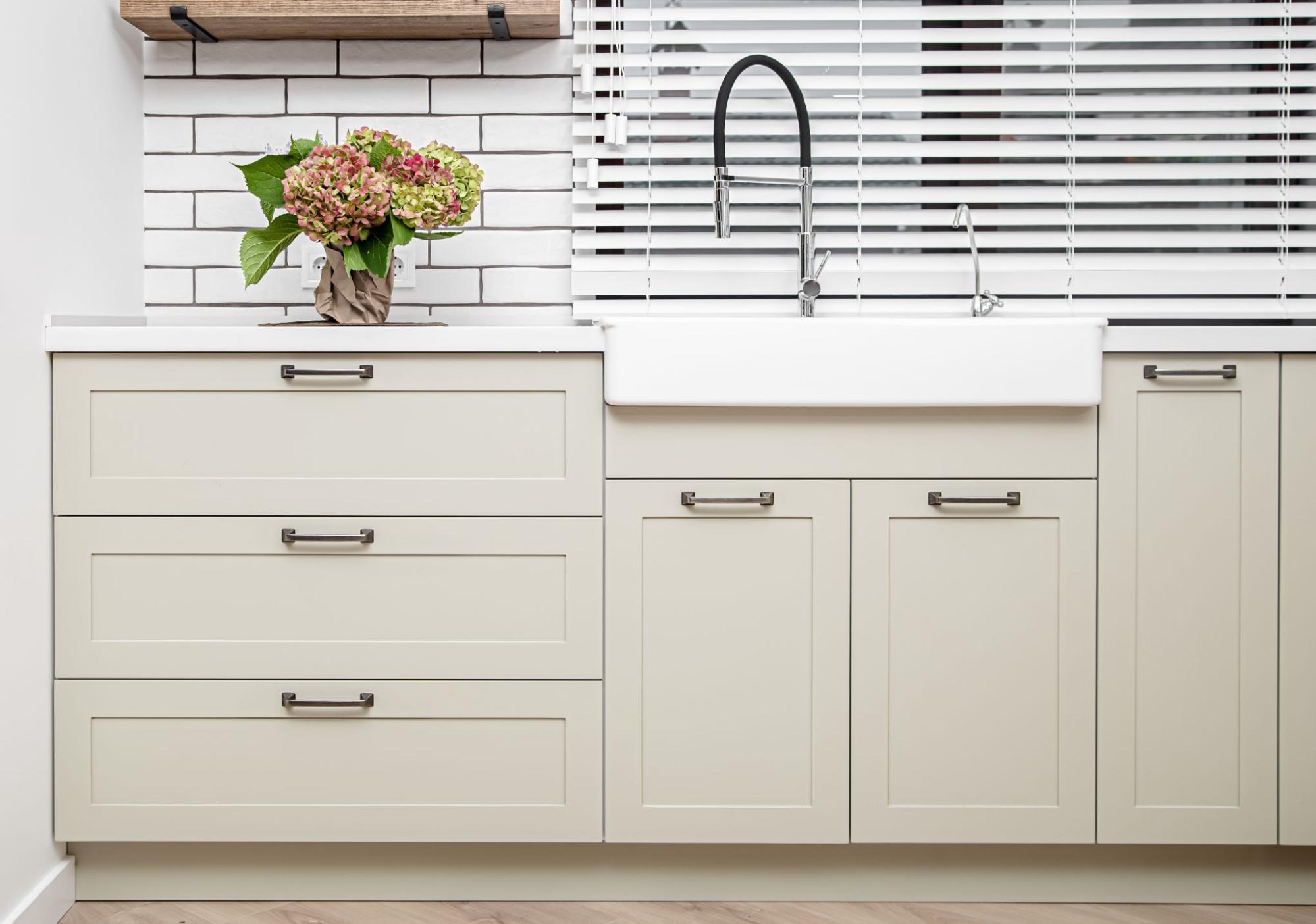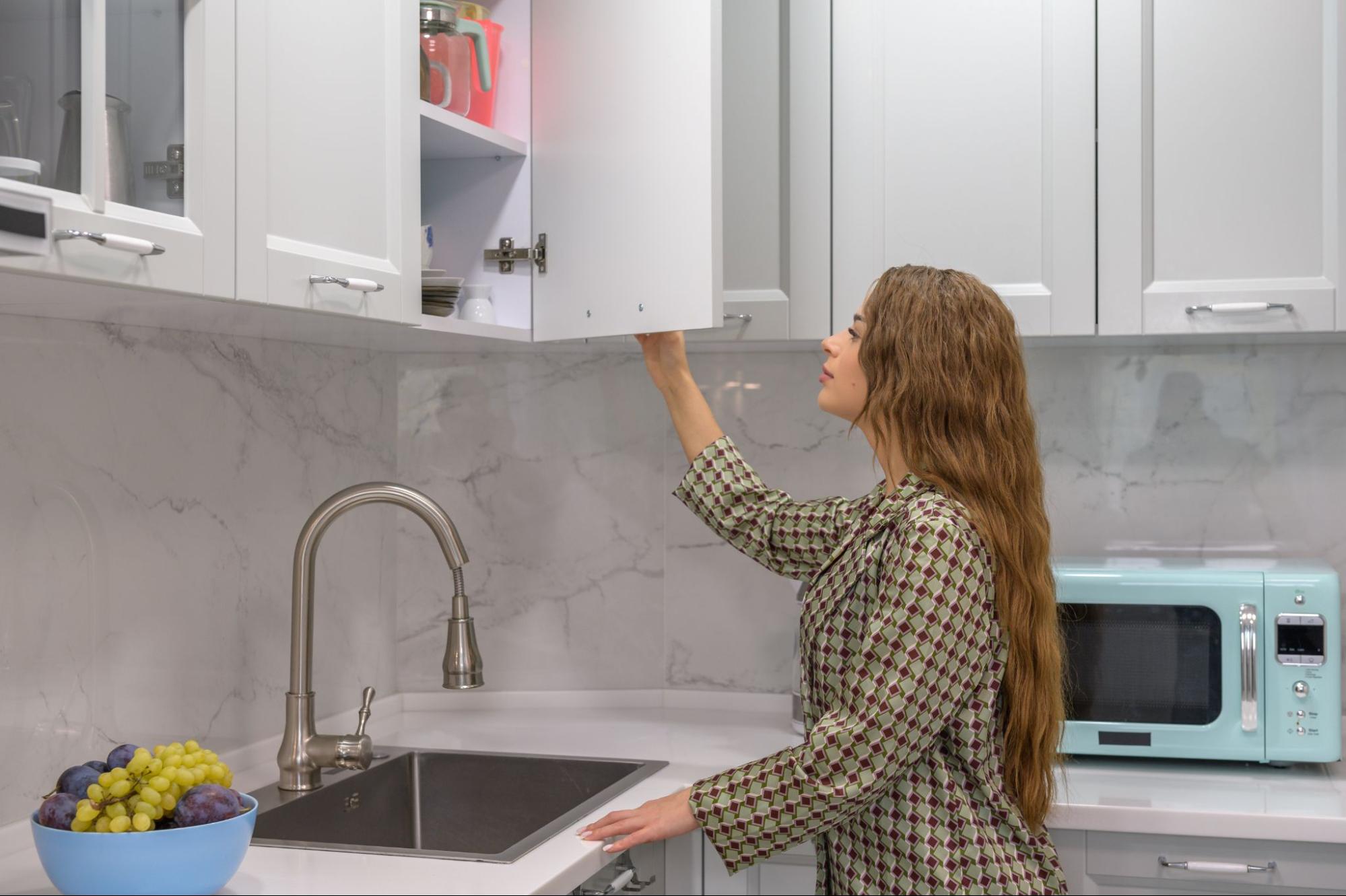Cabinet depth shapes how your kitchen functions, feels, and flows. It determines how much you can store, how easily you can access it, and whether your layout supports your daily routine. A misstep in depth planning leads to inefficient storage, poor appliance fit, and visual imbalance. Many kitchens fail to deliver not because of a lack of space, but because of misused space.
Understanding Standard Kitchen Cabinet Depths
Standard cabinet depths refer to industry norms based on typical kitchen use. Base cabinets usually measure 24 inches deep, while upper cabinets often sit at 12 inches. These measurements allow for functional counter space and easy reach, especially when paired with standard kitchen appliances. However, not all kitchens benefit equally from these fixed sizes.
Base Cabinet Depths and Why They Matter
Base cabinets anchor the kitchen, housing heavy cookware, trash bins, and cleaning supplies. At 24 inches deep, they offer a balance between storage and accessibility, but not everyone finds this ideal. Shorter users may struggle reaching the back, while taller homeowners prefer deeper storage. Some brands offer 21-inch options to accommodate tighter spaces or unique layouts. When planning, consider how you use the space daily, not just how much you can fit. Even a few inches of depth change can reshape the room’s efficiency.
Upper Cabinet Depth and Visual Proportion
Upper cabinets, usually 12 inches deep, sit above counters and should never obstruct movement. This depth ensures you can reach items without stretching over the workspace. For homes with larger plates or oversized dishware, 15-inch models may be better. However, going too deep here can block light or crowd the layout. Shallow upper cabinets also create visual openness in small kitchens. Choosing the correct upper depth balances access with aesthetics.
How Cabinet Depth Affects Storage Capacity
Deeper cabinets offer more space, but not always more usability. Excess depth can cause overreaching, poor visibility, and hidden clutter. Meanwhile, shallow cabinets may reduce volume but improve reach and efficiency. The key lies in how depth meets your workflow and layout.
Deep Cabinets May Hide More Than They Store
It’s easy to assume deeper means better, especially when storage is limited. But deep cabinets can make everyday items harder to see or access, especially near the back. It often leads to disorganization or duplicate purchases, which can mean wasting time and money for families. Solutions like pull-out shelves or tiered organizers can help, but only to a point. Shallow designs make more sense for better visibility and use.
Shallow Cabinets Increase Access and Speed
Shallower cabinets bring stored items within easy reach, reducing the need to bend, stretch, or move things around to find one item. In busy kitchens, this difference boosts speed and comfort. For example, drawers in a 21-inch base cabinet may offer faster access than shelves in a 24-inch one. Especially in galley kitchens or smaller homes, saving three inches can mean smoother traffic flow. Efficient kitchens are designed around convenience, not just capacity.
Why Kitchen Cabinets’ Depth Affects More Than Storage
The depth of your kitchen cabinets does more than hold dishes. It influences how you move, cook, clean, and see the space around you. From layout flow to appliance fit, depth affects every layer of function. Let’s look at how this single detail changes how your kitchen works.
Depth Affects Appliance Fit and Flow
Appliances and cabinetry must work in sync. Mismatched depths can cause clearance issues, affect safety, and disrupt the layout’s clean lines. Proper measurements ensure seamless integration and long-term reliability. If ignored, appliance misalignment becomes expensive to fix.

Built-In Appliances Need Exact Cabinet Depth
Dishwashers, wall ovens, and fridges all require custom cabinet framing. For example, a built-in oven must sit flush with the surrounding cabinet face, usually 24 inches deep. If the depth is too short, the stove sticks out; too deep, and you lose usable space. Appliance specs from some brands include depth requirements; don’t skip them. Misjudging even one inch can throw off cabinetry around it. Always match cabinet specs to appliance dimensions before finalizing plans.
Over-Depth Appliances Break the Design Line
Oversized or commercial-style appliances require special cabinet planning. When the cabinetry remains standard but the fridge is deeper, the result looks bulky and mismatched. That creates awkward sightlines and ruins the streamlined kitchen look. Deep appliances need matching side panels, filler strips, or custom cabinetry to balance the depth. Integrated options solve this, but early planning is necessary. Always consider your appliances before locking in cabinet dimensions.
Kitchen Workflow and Cabinet Depth Are Linked
Cabinet depth determines how smoothly your kitchen operates. Minor depth differences from food prep to cleanup change how you move and store. Work zones, like prep, cook, and clean, benefit from deep coordination. Matching cabinet depth to your kitchen rhythm improves comfort and reduces steps.
Smart Depth Supports Cooking and Prep Zones
Cooks rely on having everything within arm’s reach. Shallow drawers help organize knives, peelers, and spices in prep zones. Deeper drawers work better for bulk items like mixing bowls and blenders. However, going too deep means things slide around or get buried. Consider combining shallow drawers above deeper ones to improve organization. Storage should match what you store, not just how much you store.
Cleaning Zones Benefit from Compact Storage
Under-sink cabinets are often overlooked but critical for the cleanup flow. Standard 24-inch depths may be too large when paired with garbage disposals and pipes. Shallow custom cabinets or drawer-style units can fit better here. They also make separating trash, recyclables, and cleaning tools easier. This style keeps everything compact and accessible, speeding up cleanup. Fewer steps lead to a faster reset after each meal.
Depth Shapes Kitchen Aesthetics and Layout
Cabinet depth is not only functional; it also affects the kitchen’s appearance. Proportions, lighting, and symmetry all depend on balanced cabinet design. Inconsistent depths can make the space feel off-balance or cramped. Harmonizing cabinet depth across zones creates a cohesive, calm environment.

Uneven Depths Throw Off Visual Balance
When base and upper cabinets don’t align visually, the kitchen feels disjointed. This is especially noticeable in open-concept homes or long galley layouts. Designers recommend visual symmetry, even if the function varies. For example, a shallow pantry beside a deeper oven cabinet can disrupt the flow. In contrast, consistent depths frame appliances and create a cleaner look. Thoughtful depth planning avoids these visual clashes.
Deeper Cabinets Can Make Rooms Feel Smaller
Depth affects spatial perception more than people expect. Overly deep cabinets close off sightlines, block light, and crowd the layout, making even large kitchens feel boxed in. On the other hand, shallower cabinets open the space visually. This can be the difference between feeling tight and breathable in small kitchens. Keeping depths moderate helps maintain light and flow.
Custom Depth Cabinets Offer Flexibility
Custom cabinets give you the power to match the depth of your space. Stock cabinets may be cheaper, but they limit your options. Custom depth is often the only way to get a clean fit. Investing here avoids long-term frustration for homes with awkward corners or older layouts.
Stock Cabinets Come With Depth Constraints
Stock cabinets follow mass-produced standards: 12 inches for uppers, 24 for lowers. These work well in new builds with predictable dimensions. However, in remodeled kitchens or historic homes, they may not fit right. Modifying stock cabinets post-installation can be costly. You may need fillers, spacers, or extra panels to make them work. If your space isn’t standard, stock depth becomes a liability.
Custom Depths Maximize Unique Layouts
Custom cabinetry lets you design for awkward spaces, unusual appliances, or specific needs. For instance, shallower lower cabinets beside a doorway prevent door clearance issues. Taller cooks can request deeper prep zones to avoid strain. Even angled corners can be designed around with variable-depth cabinets. This kind of personalization makes the kitchen feel tailored. In high-use homes, it’s worth the higher price.
Choosing the Right Cabinet Depth for Your Kitchen
There is no correct cabinet depth, as it depends on how you live. Your cooking habits, kitchen size, and appliance choices all shape the right fit. The best depth isn’t the deepest but the one that makes everything easier. Function must guide design.
Align Depth With Your Cooking and Storage Habits
If you cook often, you need quick access to tools and ingredients. Shallow drawers near prep areas make a difference. Deeper cabinets help with storage overflow for weekend cooks or bulk shoppers. Consider what you use weekly, not just occasionally. Then, design storage around those habits. This approach improves day-to-day usability.
Account for Household Needs and Future Use
Families may require flexible cabinet depths to suit everyone. Aging in place, for example, may call for shallower units to reduce strain. Shorter users or children also benefit from accessible storage. Likewise, storing small appliances requires deeper cabinets to hide visual clutter. Choosing variable depths across the kitchen meets everyone’s needs. That kind of planning adds long-term value.
Design Smarter by Prioritizing Cabinet Depth
Every inch of cabinet depth either solves a problem or creates one. This quiet detail dictates comfort, efficiency, and longevity in your kitchen. When depth aligns with how you live, the entire space works better without you even thinking about it. Skip the guesswork and start with depth—it’s the most innovative design move you can make.
The correct depth is just the beginning. Visit the North American Cabinet LLC blog for expert tips that help every inch of your kitchen work harder.

